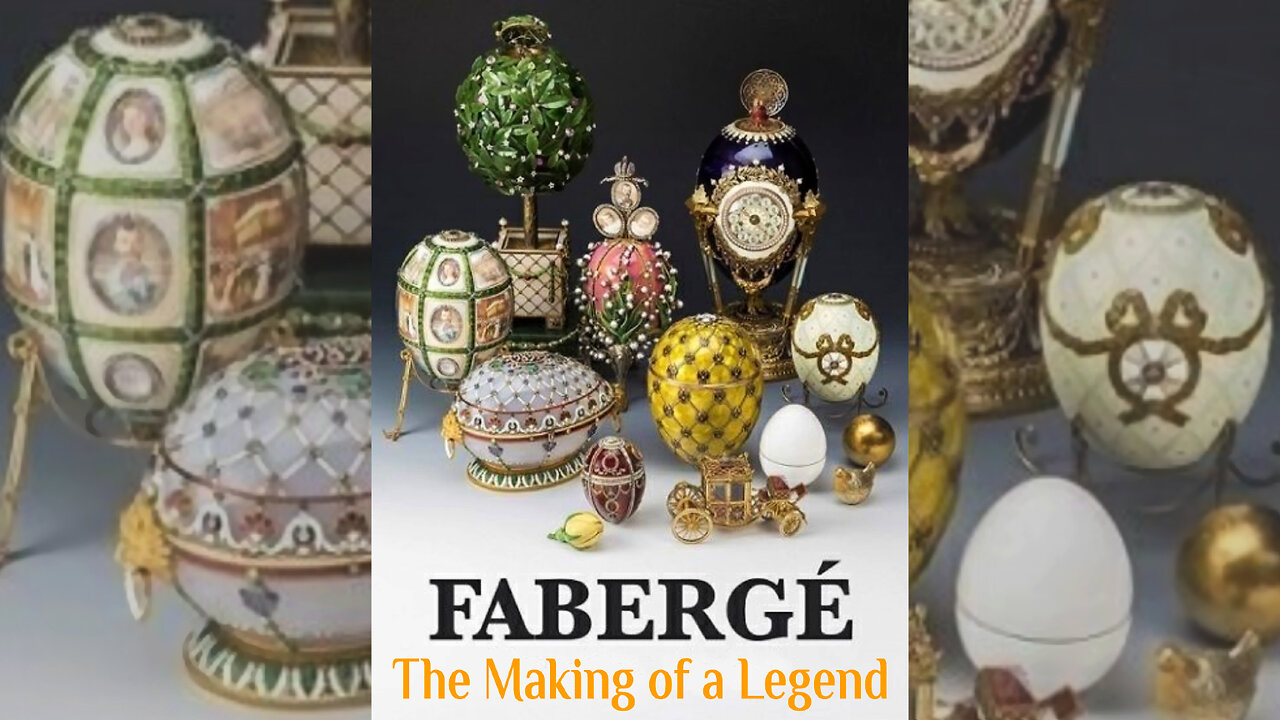Premium Only Content

Fabergé: The Making of a Legend
A 2021 ARTE France Documentary, written and Directed by Jean-Pierre Cottet, narrated by Lexie Kendrick.
For over a century, the name Fabergé has evoked the world's most extravagant Easter eggs. Today, the Imperial Eggs, as they came to be called, continue to enjoy an unmatched position in the history of the decorative arts. But the work of Fabergé goes well beyond that. Miniature animal sculptures, clocks, cigarette cases, theater binoculars... relying on the rich creativity of his brother Agathon and on a network of talented suppliers, workshop managers and subcontractors, Carl Fabergé gave birth to a magical world and revolutionized jewelry. He designed a range of other work of high quality and intricate details, that took the art world by storm, provoking the passion of thousands of collectors across the planet.
Fabergé broke the codes of traditional jewellery and created an exceptional industry. This film immerses us into the incredible universe the House of Faberge invented. Above the eggs, it retraces the destiny of the Faberge Clan, and explores its entire work. An exceptional human adventure that took place in a declining Russian Empire about to be swept away by the revolution. The path of the Russian Fabergé family of jewelers from Saint Petersburg reflects the history of the Russian Empire from the mid-19th century to the fall of the tsarist rule in the course of the revolutionary upheavals of 1917.
In 1872, the Russian goldsmith and jeweler Peter Carl Fabergé took over his father Gustav's prosperous jewelery shop in Saint Petersburg and made it world-famous. With his outstanding creations, Fabergé fulfilled the luxury needs of the elite, who were completely isolated from the starving people.
After Alexander III become aware of Faberge in 1882, he turned into court jeweler to the Tsar and later to his son Nicholas II. The Romanovs' passion for his jewelery and decorative objects ensured him unparalleled prosperity and artistic freedom. The trigger was his legendary surprise egg made of enamel, gold and ruby, with which Alexander III delighted his wife Maria Fyodorovna at Easter 1885. Until the revolution, more imperial Easter eggs followed almost every year, ever more valuable and original than the other. But these eggs are only a tiny part of Fabergé's oeuvre. In fact, he founded an industry of valuable jewelry objects that immediately aroused the passion of collectors. These exquisitely tasteful, brightly coloured, sometimes stylistically bold pieces of jewelery served the tsar's family as gifts to foreign dignitaries on their travels. Fabergé supplied the Queen and other crowned heads of Europe as well as the kings of Siam. For the families of the aristocracy and the rising industrial bourgeoisie in Russia, Fabergé's talismans, fetishes and jewels were real objects of desire, with which they could feel like little tsars. Powered by his conviction that the value of a painting is not measured by its price, Fabergé elevated the jeweller's craft to an art and the craftsman to the artist.
-
 LIVE
LIVE
ADH Gaming
5 hours agoWarzone Kar98 Iron sight Quick scopes
35 watching -
 2:48:34
2:48:34
Adam Does Movies
12 hours ago $1.42 earnedAll The Big Movie Announcements From CinemaCon 2025- LIVE!
28.4K -
 1:07:30
1:07:30
Josh Pate's College Football Show
5 hours ago $1.84 earnedBig CFB Changes Coming | USC + Texas + Alabama In 2025 | Truth About Officiating | I Am Engaged
32K1 -
 4:43:40
4:43:40
Biscotti-B23
8 hours ago $0.27 earned🔴 LIVE VIEWERS VS MEMBERS BEEF 🔥 FINDING A NEW MAIN ⚔ BLEACH REBIRTH OF SOULS
18.7K2 -
 3:21:55
3:21:55
DTDUBtv
5 hours agoOUTLAST TRIALS WITH SARAHSLOTH17
20.6K -
 LIVE
LIVE
Major League Fishing
5 days agoLIVE! - MLF Bass Pro Tour: REDCREST - Day 4
6,508 watching -
 3:46:44
3:46:44
EricJohnPizzaArtist
5 hours agoAwesome Sauce PIZZA ART LIVE Ep. #42: It’s Cartman!
39.8K5 -
![[Vtuber] Black Ops 6 warzone and mp! Ep.2](https://1a-1791.com/video/fww1/68/s8/1/z/v/X/z/zvXzy.0kob-small-Vtuber-Black-Ops-6-warzone-.jpg) 5:45:29
5:45:29
Ryker SteelVT
5 hours ago[Vtuber] Black Ops 6 warzone and mp! Ep.2
11.1K1 -
 9:53
9:53
China Uncensored
9 hours agoThe UK Just Screwed Itself BADLY
24.7K14 -
 3:45:42
3:45:42
Deaf Gamer Girl
5 hours agoFortnite then Schedule 1 - DGG play !
13.1K